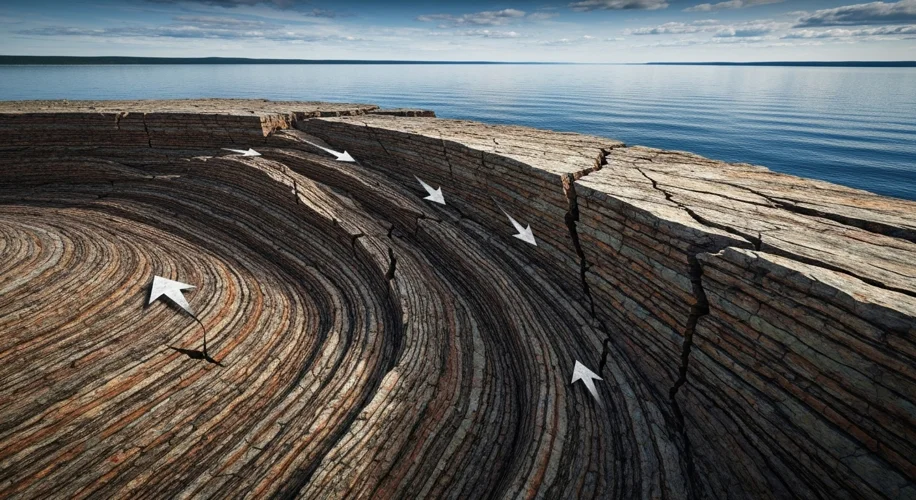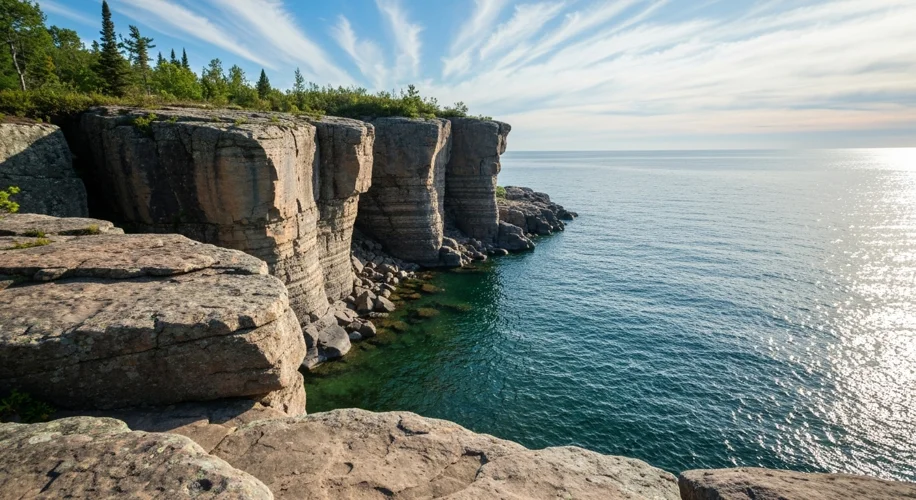Imagine Earth not as the planet we know today, but as a colossal jigsaw puzzle of continents, constantly shifting, colliding, and reforming over billions of years. Our planet’s history is a saga of immense geological drama, and hidden within the ancient rocks of Lake Superior lies a compelling chapter of this story: the formation of the supercontinent Rodinia.
For eons, Earth’s crust has been fractured into tectonic plates that glide, grind, and crash against each other. This relentless dance shapes our world, raising mountains, opening oceans, and, on a grander scale, assembling continents. Billions of years ago, a series of colossal collisions, almost unimaginably violent, began to knit together vast landmasses into a single, immense supercontinent – Rodinia.
But how do we know about events that transpired so long ago, before any form of life capable of recording them even existed? The answer lies in the very rocks beneath our feet, or in this case, beneath the waters of the magnificent Lake Superior. Geologists have discovered that the bedrock surrounding this vast freshwater lake contains a unique record of ancient volcanic activity and the immense pressures associated with continental collisions.
Around 1.8 to 1.5 billion years ago, North America, or what would eventually become its core, was a dynamic place. It was a time of intense volcanic activity, with magma spewing forth and solidifying into vast igneous provinces. These ancient volcanic rocks, incredibly preserved in the Lake Superior region, act like a geological diary. The chemical signatures and isotopic compositions locked within these rocks tell a story of tectonic plates moving, colliding, and undergoing extreme heat and pressure.

Scientists studying these rocks have identified evidence of multiple orogenic events – essentially, mountain-building episodes caused by tectonic plate collisions. These weren’t just small hills forming; these were continent-sized chunks of the Earth’s crust slamming into each other. One significant event, the Mazatzal orogeny, played a crucial role in building up the southern part of the North American craton (the stable interior of a continent). Another major event, the Penokean orogeny, further consolidated landmasses to the north.
These collisions weren’t gentle embraces. They were cataclysmic events that would have generated earthquakes of unimaginable magnitude and volcanic eruptions on a scale far beyond anything we witness today. Imagine the ground shaking for months, not days, and skies choked with ash for years. The sheer force involved in pushing and folding these ancient continental crusts created the thick sequences of deformed rocks, metamorphic minerals, and igneous intrusions that geologists can still study today.
As these tectonic forces continued, smaller continental fragments and volcanic island arcs were also swept up into the growing mass. The region around Lake Superior, known as the Mid-Continent Rift System, offers tantalizing clues about a period when the North American continent began to tear itself apart, only to be reassembled through subsequent collisions. It’s a testament to the complex and often contradictory nature of plate tectonics.
The culmination of these billions of years of tectonic activity was the formation of Rodinia, one of Earth’s earliest known supercontinents. It is believed to have assembled around 1.1 billion years ago and then began to break apart about 750 million years ago. While Rodinia itself is long gone, its constituent pieces, including the ancient core of North America, were later reassembled into subsequent supercontinents like Pangea.
The rocks of Lake Superior, therefore, are not just geological curiosities; they are tangible evidence of the Earth’s deep, violent, and transformative past. They speak of a time when our planet was a crucible of change, forging the very foundations of the continents we inhabit today. By deciphering the silent stories held within these ancient stones, scientists continue to piece together the grand, epic narrative of Earth’s continental evolution, revealing how tectonic forces, over immense timescales, ultimately shaped the world we live in.

